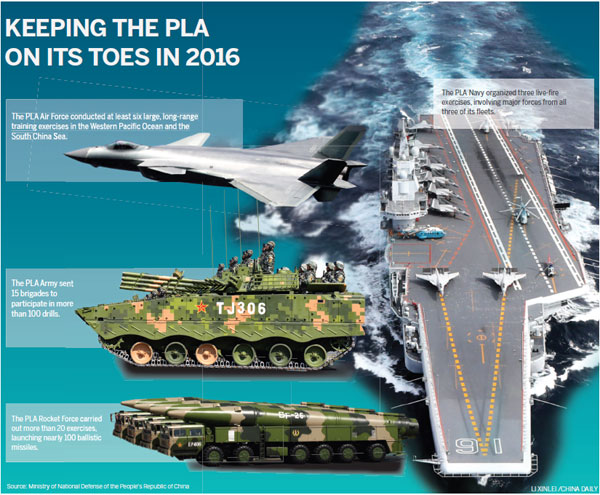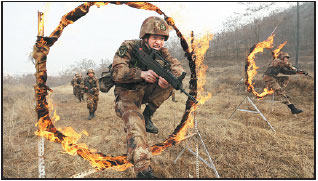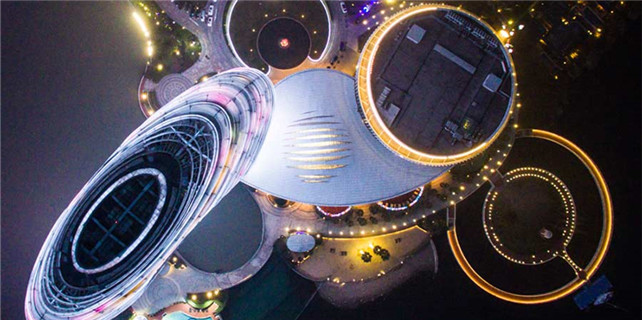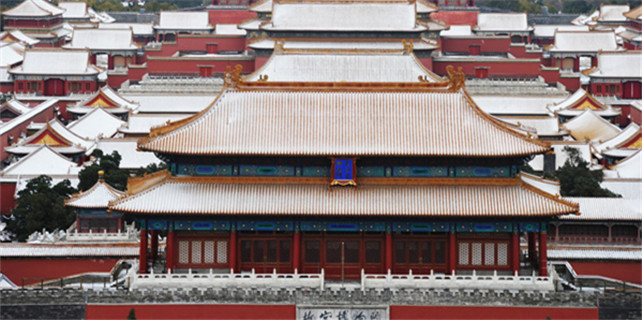PLA restructures to meet new challenges
Reform of China's armed forces is designed to develop capabilities and produce a leaner, modern fighting unit. Zhao Lei reports.
In the past 12 months, China has carried out a number of measures to streamline its armed forces and prepare them for the challenges posed by modern warfare.
The reform has resulted in the biggest overhaul of the People's Liberation Army for several decades. The PLA's senior governing bodies up to the level of the Central Military Commission were reshuffled, the regional command was reorganized and new units were established to prepare for wars in cyberspace and even space itself.
Looking back at the timeline, it seems clear that President Xi Jinping, who is also chairman of the commission, probably decided to revolutionize the armed forces when he was elected top leader in November 2012.
In November 2013, following nearly a year of preparations, a plenary session of the Central Committee of the Communist Party decided to reform the national defense system and the PLA.
|
People's Liberation Army soldiers jump through rings of fire during combat training last week.Yuan Hongyan / For China Daily |
In March the following year, the CMC established a group under Xi's control tasked with drawing up a roadmap for reform and guiding its implementation. In July 2015, an overall reform plan was approved by the top Party and military authorities.
The decision remained unpublicized until September 3, 2015, when a parade was held to mark the 70th anniversary of the end of World War II and the War of Resistance Against Japanese Aggression (1937-45). It was then that Xi announced that the number of troops would be reduced by 300,000. Almost every military observer at home and abroad was caught off guard, but they quickly realized that it was just the beginning of a new chapter in the PLA's history.
Chain of command
About three months later, the CMC unveiled a blueprint for what it referred to in an understated manner as the "latest round of reform of the national defense and armed forces". The blueprint pledged to establish a leaner and more efficient chain of command, to reduce the number of non-combatant personnel and departments, and to build the PLA into a force capable of winning modern wars, which are characterized by information warfare and joint operations. The goals should be achieved before 2020, the commission said.
Prior to the blueprint's publication, the commission organized 860 discussion groups and workshops, solicited the opinions of 690 civilian and military units and sought suggestions from nearly 3,000 officers and experts, according to the in-house PLA Daily.

The last day of 2015 saw the PLA Army Headquarters, the PLA Rocket Force and the PLA Strategic Support Force established - moves that formally started the historic shakeup.
The founding of the PLA Army Headquarters ended 88 years without a leading body for the Army, and also signaled the end of an era in which the unit dominated the other services and had the final word in military affairs.
Historically, the Army did not have its own headquarters because its units were under the direct control of the CMC, while the seven former regional commands oversaw the operations of Army units under their jurisdictions.
Zhang Junshe, a military strategy researcher with the PLA, said the establishment of the PLA Army Headquarters would help the military to resolve a number of long-standing problems related to the chain of command and improve its joint operation capabilities.
According to Du Wenlong, a senior researcher at the PLA Academy of Military Science, the rebranding of the Second Artillery Corps - which was formed in 1966 to control the country's ballistic missiles and used the word "artillery" as cover for its activities - to the unambiguously named PLA Rocket Force indicates that China is transparent and confident about displaying its true military capabilities to the world, and that the Rocket Force is expected to play a larger role in the future.
At the founding ceremony, Xi urged the Rocket Force to improve the nation's nuclear deterrence and counter-strike capacity, and also strengthen its medium- and long-range precision strike ability.
The tasks assigned to the Strategic Support Force have yet to be unveiled, but Yin Zhuo, director of the PLA Navy's Expert Consultation Committee, said the responsibilities of the new branch will include target reconnaissance and tracking, global positioning operations, space-asset management and defending against hostile activities in the cyberspace and electromagnetic fields.
Zhang said the Strategic Support Force would add new "fighting power" to the PLA and would become a new pillar of national security.
In January last year, the four top PLA departments-staff, politics, logistics and armaments - were disbanded and their functions and duties were handed over to 15 new agencies under the control of the CMC. The reshuffle was designed to boost the efficiency and professionalism of the military's leading bodies, according to Zhao Xiaozhuo, a senior researcher at the PLA Academy of Military Science.
Soon after the changes to the leading authorities, the regional systems were also reshuffled to become the Eastern, Southern, Western, Northern and Central theater commands replacing seven regional commands named after the cities in which their headquarters were located - Beijing, Shenyang, Jinan, Lanzhou, Nanjing, Chengdu and Guangzhou. The CMC also established a Joint Operations Command Center and a Joint Logistics Support Force.
The latest developments came in early December, when Xi called for a smaller Army and ordered the structure of the military to be adjusted and optimized.
According to PLA Daily, the president is hoping that the PLA can become a smaller but more integrated and flexible fighting force, and that new types of combat units should be given special priority.
Each combatant branch of the PLA - the Army, Navy, Air Force and Rocket Force - has confirmed that realistic training drills and exercises were intensified last year. The Army sent 15 brigades to participate in more than 100 drills; the Air Force conducted at least six large, long-range training drills in the Western Pacific Ocean and the South China Sea; the Rocket Force carried out more than 20 exercises and launched nearly 100 ballistic missiles during exercises; and the Navy organized three live-fire exercises that featured a large number of forces from its three fleets.
In addition, the CNS Liaoning carrier battle group conducted its first live-fire drill, four years after the carrier was commissioned.
Other less-obvious administrative changes have taken place and are expected to affect the PLA's development path in the wake of the reform, according to observers.
The CMC's Joint Staff Department set up a theater environment support bureau and an overseas operations office; the PLA Central Theater Command established a military requirement bureau; and the PLA Southern Theater Command founded an information support bureau. In addition, commanders and staff officers have been ordered to improve their capabilities in joint operations and the use of information.
The moves indicate that the military has been concentrating its resources to ensure that every component will focus on preparation and winning wars, the observers said.
Modernization
In addition to the structural overhaul, the PLA also made strides in armament modernization last year. The Air Force is now taking delivery of the Y-20 strategic transport plane, mass production of the J-20 stealth fighter is understood to have started. A next-generation strategic bomber is also being developed for the Air Force and is expected to be unveiled soon.
At the same time, the first domestically designed aircraft carrier is taking shape at a shipyard in Dalian, Liaoning province, while the Rocket Force has commissioned a new type of strategic ballistic missile.
A sweeping anti-corruption campaign within the military did not ease up last year. According to the information available, at least seven high-ranking officers - including the former political commissar of the PLA Air Force and the former commander of the People's Armed Police Force - were placed under internal investigation after being accused of corrupt activities.
More than 50 senior officers at the rank of major general or higher - including Xu Caihou and Guo Boxiong, the former vice-chairmen of the Central Military Commission - have been convicted or placed under disciplinary probes since Xi took office in 2012.
Contact the writer at zhaolei@chinadaily.com.cn


















